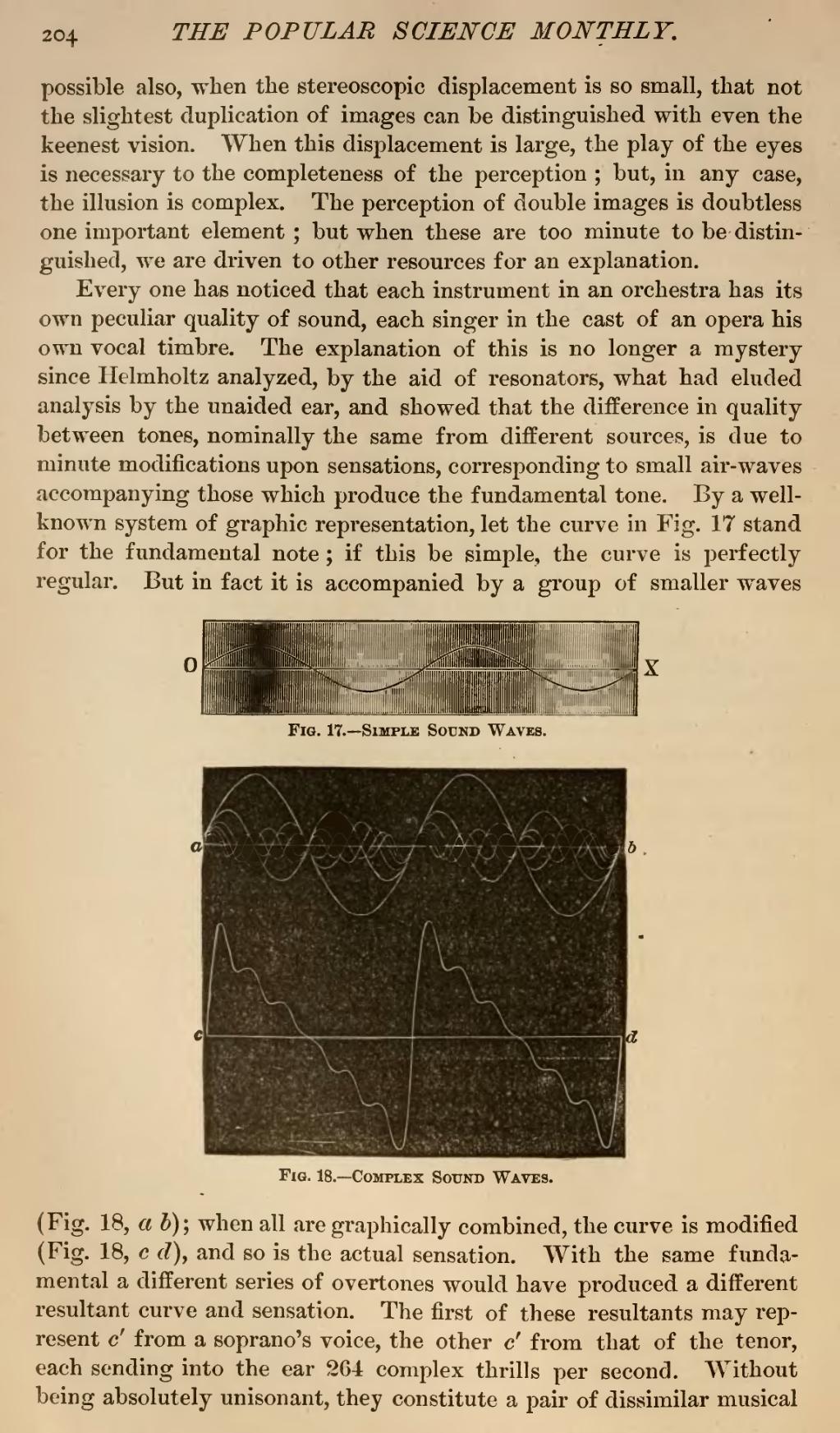possible also, when the stereoscopic displacement is so small, that not the slightest duplication of images can be distinguished with even the keenest vision. When this displacement is large, the play of the eyes is necessary to the completeness of the perception; but, in any case, the illusion is complex. The perception of double images is doubtless one important element; but when these are too minute to be distinguished, we are driven to other resources for an explanation.
Every one has noticed that each instrument in an orchestra has its own peculiar quality of sound, each singer in the cast of an opera his own vocal timbre. The explanation of this is no longer a mystery since Helmholtz analyzed, by the aid of resonators, what had eluded analysis by the unaided ear, and showed that the difference in quality between tones, nominally the same from different sources, is due to minute modifications upon sensations, corresponding to small air-waves accompanying those which produce the fundamental tone. By a well-known system of graphic representation, let the curve in Fig. 17 stand for the fundamental note; if this be simple, the curve is perfectly regular. But in fact it is accompanied by a group of smaller waves

Fig. 17.—Simple Sound Waves.

Fig. 18.—Complex Sound Waves.
(Fig. 18, a b) when all are graphically combined, the curve is modified (Fig. 18, c d), and so is the actual sensation. With the same fundamental a different series of overtones would have produced a different resultant curve and sensation. The first of these resultants may represent c' from a soprano's voice, the other c' from that of the tenor, each sending into the ear 264 complex thrills per second. Without being absolutely unisonant, they constitute a pair of dissimilar musical
